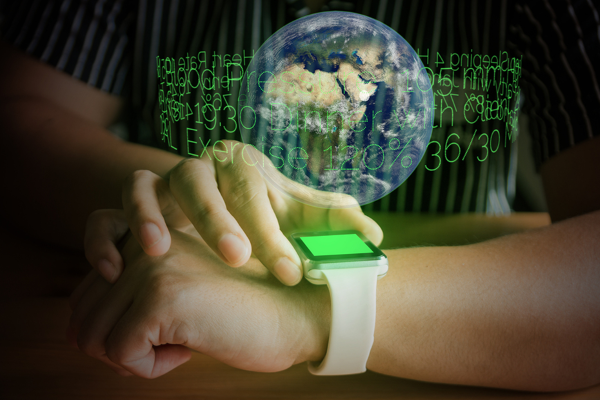Technology keeps on moving from one generation to another. A few decades ago, we could boast of technologies that have been of great help to humans. No doubt, technology will keep on improving as moments evolve.
The earth has used different technological tools over the years, especially in the academic sector. The technological sector globally has made academy work easier to do and more fun to teach them. Schools now employ different tools for quick and easy understanding. The globe is fast leaving behind the pocket-gadget, embracing wearable technologies.
 The reason is not far-fetched. In recent years, essays and academic writing has been a major dilemma for high school students. Likewise, many college students struggle to write perfect papers for their assignments and exercises. The improvement in the tech space has made sites like papersowl.com a dream come true for beginners. With several essays and thesis samples, learners now have all they need to produce excellent papers.
The reason is not far-fetched. In recent years, essays and academic writing has been a major dilemma for high school students. Likewise, many college students struggle to write perfect papers for their assignments and exercises. The improvement in the tech space has made sites like papersowl.com a dream come true for beginners. With several essays and thesis samples, learners now have all they need to produce excellent papers.
In the same vein, attachable tools are now a dream come true for students worldwide. This is due to many reasons, including that these tools have proven to be more comfortable and conventional for academy use. Given that they are wearable, attachable technologies have proven smarter and more reliable. Now, there is an increase in production of the gadgets for a smarter and easier lifestyle.
Examples of Wearable Technology
Wearing at least one wearable tech is what’s in vogue these days. There is an increase in the production of different types of attachable techs in the market today. Ranging from smart glasses, brain sensors, smartwatches, VR headsets, fitness trackers for fitness, etc.
The smartwatch is relatively affordable and popular because it lets you take several classes, even when in motion. A Smartwatch also makes you get on the internet without a hitch. Pupils can find their way through a field trip with a Google map showing on their watch.
Merits
eLearning Solutions
Technology has greatly improved the academic sector significantly. It has come with numerous educational benefits. Gone are the days of strict classroom knowledge and physical education. Schooling has moved into a virtual reality where distance learning is fully encouraged. eLearning provides a new dimension to knowledge, and it’s a major reason why the impact of education on economic growth continues to skyrocket.
Learners can now read from any corner of the planet with just a mobile data connection and technological gadgets, either through an educational app for recording lectures, collecting class data and solving math problems. With these gadgets, beginners can also pick up different studies during their spare time.
Qualitative Student Engagement
”A wearable device can be fully utilized to generate a comprehensive engagement with students both within and outside the walls of a classroom,” says one of our Papersowl.com professional writers. “Not only does it facilitate hands-free learning, it cuts off all distractions, and drastically saves your time.”
Language learners can learn how to pronounce words better with these gadgets. According to a 2018 study, learners comprehending the English language used smartwatches to get feedback and assistance on pronunciations; pupils in real-life conversations can get the words they are looking for, offering critical knowledge support outside their classes.
Hands-free Learning
The use of wearable devices in academics has fast-tracked hands-free knowledge. Students can now perform a good number of educational tasks without using their hands, making for easier and faster understanding. By using intelligent watches, for example, learners can read their notes right from the board onto the watch without handwriting them. These recordings can be converted into a text document using the speech to text function.
 If any thoughts or question pops up in a student’s mind, they can quickly start the record features, record lectures and access it at a later period where they would most likely have forgotten if it was not recorded. The student can go further and set a reminder to ask the question for the next class, and this is done using the organizer function. Also, beginners can have these smartwatches read papers, essays, emails and other academic materials aloud when they are stuck in traffic or while attending to something else.
If any thoughts or question pops up in a student’s mind, they can quickly start the record features, record lectures and access it at a later period where they would most likely have forgotten if it was not recorded. The student can go further and set a reminder to ask the question for the next class, and this is done using the organizer function. Also, beginners can have these smartwatches read papers, essays, emails and other academic materials aloud when they are stuck in traffic or while attending to something else.
Functional educative integrations
Attachable gadgets often come with functions that are easily adapted for scholarly purposes. For example, google glasses have a camera and microphone seamlessly integrated into them. This means students can record classes, webinars, and their notes using google glasses, which pupils can recall and rewatch. This is particularly useful in cases where a complex academic question was solved by the teacher; hitherto, the only means of recording such is taking notes, but wearing tools means the student can now watch the solution and explanation over and over again till they fully understand.
Also, almost all forms of attachable tools can run third-party applications. This means individuals and organizations can install their customized applications. This has been key in adapting various tools for academic use, teaching inclusive. Institutions and teachers can develop and install their applications on students’ wearables. This takes education beyond the phase of traditional boards. For example, teachers can take basic lessons, share assignments and return scripts, and have group discussions right on the gadgets.
CONCLUSION
There is still a truckload of advantages learners can get from wearable technology. Google syncs google maps right with your google glass, which means you can get exact locations and directions without looking it up on your phone. A smartwatch also helps you track vital data such as your heart rates, the distance you covered per day and even your sleeping patterns. Sports beginners find these functions helpful, and as a regular student, you can also take advantage of these.
The good news is that these tools are becoming reachable and affordable as the day goes by. Employees are becoming happier with the smart tools; children have more fun while acquiring knowledge, and teachers are now happier. Techs will keep improving, and like wearable devices, we hope that the next generation will have more mind-blowing breakthroughs in the virtual reality realm.
Also Read: JBL Charge 5 – Portable Waterproof Speaker with Built-In Powerbank





